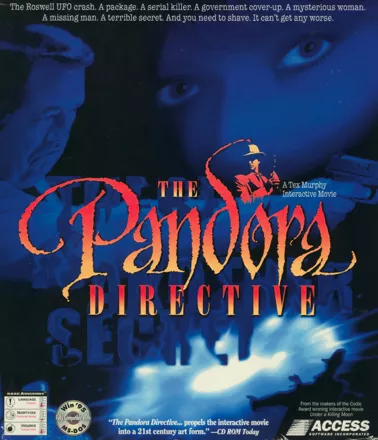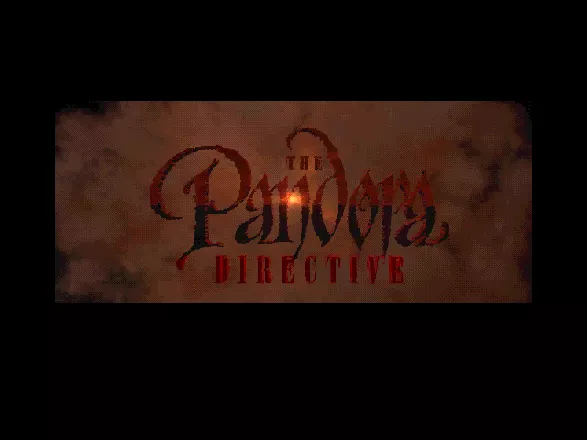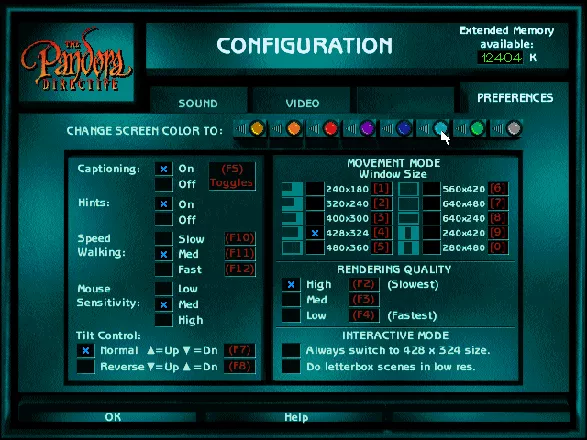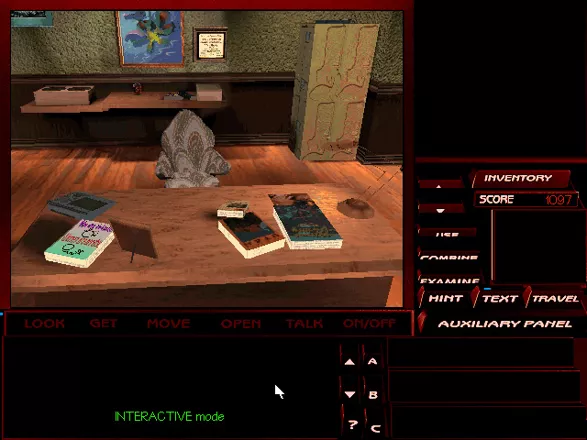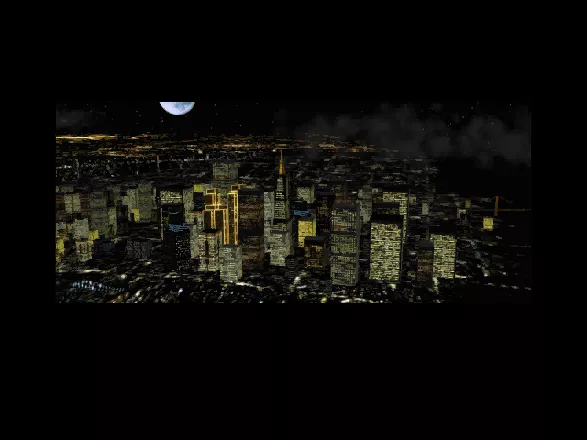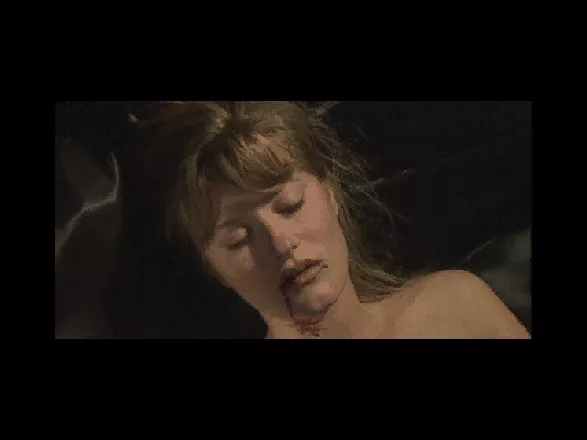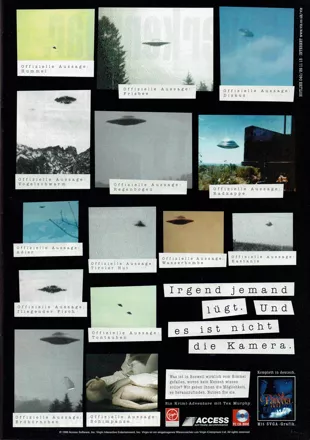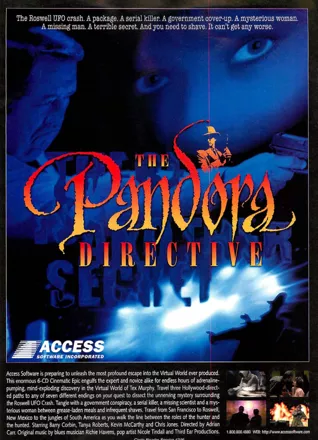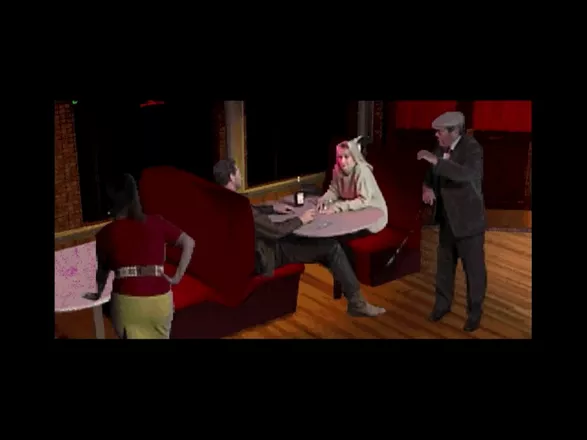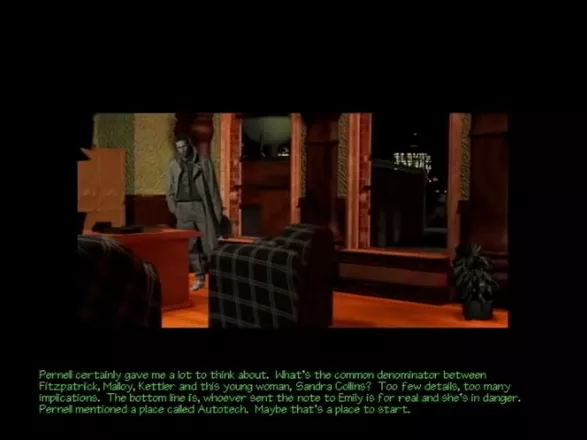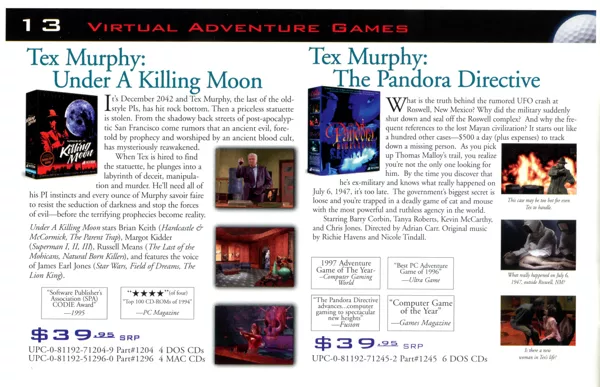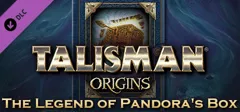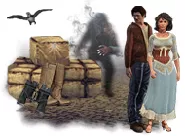The Pandora Directive
Description official descriptions
Welcome to San Francisco of the future - a strange megalopolis with a post-apocalyptic feel, where ordinary humans co-exist with mutants - the result of radioactivity. In this city is also the office of Tex Murphy, a lonely private investigator, kind-hearted, yet bitterly ironic. He is hired to investigate the disappearance of a scientist named Thomas Malloy. A series of murders occurs at that time, and before long Tex finds himself involved in a complex conspiracy of political intrigues and shocking scientific discoveries.
The Pandora Directive is a sequel to Under A Killing Moon, utilizing the same 3D engine, real actors, and gameplay system. The player can physically explore the game world, looking at objects from different angles, zooming in, etc. It is necessary to talk to many people about various topics, and also solve some complex puzzles. The game provides a built-in hint system for the puzzles, but the player does not get any points for solving them if he opts to use it.
The game introduces a new gameplay element: Tex has three kinds of answers at his disposal during some important dialogues. Depending on what kind of approach the player chooses for Tex (especially in conversations with his sweetheart Chelsee), subsequent plot events will be influenced, eventually leading to one of the six different endings.
Groups +
Screenshots
Promos
Videos
Add Trailer or Gameplay Video +1 point
See any errors or missing info for this game?
You can submit a correction, contribute trivia, add to a game group, add a related site or alternate title.
Credits (DOS version)
76 People (72 developers, 4 thanks) · View all
| Starring |
|
| Co-Starring | |
| Movie Sequences Edited & Directed by | |
| Interactive Movie Produced by | |
| Designed by | |
| [ full credits ] | |
Reviews
Critics
Average score: 85% (based on 19 ratings)
Players
Average score: 4.3 out of 5 (based on 66 ratings with 6 reviews)
The Tex Murphy series is hands down the best drama on PC
The Good
Unlike many other adventure games the plot and script of the game are VERY polished. The Tex series of games if one of the few adventures that focus on storyline rather than graphics or something else. From and adults point of view this could easily be transported to book form (and it was) or TV or even feature film. The story is that strong.
While this game did not progress much in terms of method or interface the game did improve in many categories.
1. <u>Longer more in-depth storyline.</u>
I would have thought after playing Under a Killing Moon that this would not be possible but it is! Pandora just pulls you in and touches more on your heart and emotions than UAKM.
2.<u>Multiple Paths</u>
I think that there were 3 different paths that you could take resulting in 12 different endings! You could choose to be the "good" Tex and follow the straight and narrow. You could be the "bad" Tex and be totally self-centered and throw friendships and love to fire. Or you could just choose the middle path. Part bad Tex part good Tex.
3.<u>Hint Files</u>
I have said this time and time again. How unselfish and cool of Chris Jones and the foks at Access to not charge me for hints. But not just that, the game also keeps track of where and what I have done. So If I have completed all there is to know about a place or person it reflects that in the hint system. Thus I dont have to waste time looking for the right tip, and can limit my exposure to other info.
4.<u>Excellent Acting</u>
As with all Tex games the acting talent is first rate. No doubt about it NO ONE DOES IT BETTER!
The Bad
Part of the problem with multiple paths is that sometimes it can be hard to find where you went wrong. For instance if you want the really good ending you have to be careful in your dealings. (but I can handle that) Also the game engine didnt change between UAKM and Pandora. Overall though that really isnt that bad of a thing.
The Bottom Line
Please if you are looking for something of substance just give Tex a try. Its hands down the best drama you can find on a PC!
DOS · by William Shawn McDonie (1131) · 2001
The Good
This is where the team actually hit their pace with the story, cinematography, and gameplay. A huge leap over the campiness that was Under a Killing Moon, this game fully imbues the streets of San Francisco with that oldtime P.I. feel. The music and lighting only drive the nail home.
The acting was also much better this time around, thanks to the presence of more Hollywood actors. Each major character brings their role to life with a power not often found in a game. Barry Corbin especially is frightening as the psychotic head of the NSA. Still, there are a few subpar performances on the sidelines.
And for another note, THANK YOU OH THANK YOU GOD FOR NOT USING THAT CHEAP TRICK FROM THE LAST GAME! One thing that drove me up the wall from UAK was the method of saving disk space by only having one actor move at a time while the other was a frozen sprite hanging in C-Space. Not only did it look terrible, it was also obvious that the other actor was talking to thin air.
Gameplay-wise, the puzzles were fun and fit in perfectly with the story. Almost everything that had to be done felt right, from searching through an alleyway full of garbage cans for the right newspaper to piecing together a torn death threat.
The Bad
The Windows version was only a half-transport, and suffered heavily from bugs. I finally had to ignore half the warnings it blared at me every time I booted it up and soon discovered that it worked better with all those threatening utilities still running. Still, there were occasional lockups.
The Bottom Line
Definitely for anybody seeking a good adventure game with a damn good detective yarn thrown in.
DOS · by Vance (94) · 2000
No matter how bad things are, things can always get worse.
The Good
ONE FITTIN' PACKAGE
**The Bad**
RUNNING WITH THE TIME
**The Bottom Line**
It's a Tex Murphy game, it has Chris Jones in it, it should be a reason enough to get it. It has a few drawbacks to compare it with Under a Killing Moon and Overseer, but it's filled with great art, superb dramatic scenes, Tex's charm, and a PI rules. Having Tex Murphy games in your collection is a trademark of quality, an underrated top quality.
DOS · by MAT (241375) · 2012
Discussion
| Subject | By | Date |
|---|---|---|
| Entertainment or game players mode? | Zovni (10500) | Feb 26, 2011 |
Trivia
Novel
A novelization of the game (as with a later adaptation of the earlier game Under A Killing Moon) was published through the Proteus imprint of Prima Publishing. They were written by Aaron Conners; the TPD novel was first published in August of 1995.
Awards
- Computer Gaming World
- May 1997 (Issue #154) – Adventure Game of the Year
Analytics
Related Sites +
-
Pandora Directive Hints
Great question and answer type hints to help you solve the game at your own pace. -
Unofficial Tex Murphy Site
Unofficial Tex Murphy: A newly refurbished Tex Site with a message board, a news section, help on all the games, a Fan Fiction/Art section and many more feature.
Identifiers +
Contribute
Are you familiar with this game? Help document and preserve this entry in video game history! If your contribution is approved, you will earn points and be credited as a contributor.
Contributors to this Entry
Game added by MAT.
Windows added by Picard. Linux, Macintosh added by Sciere.
Additional contributors: William Shawn McDonie, Robin Lionheart, Unicorn Lynx, Jeanne, Pseudo_Intellectual, Patrick Bregger.
Game added May 22, 2000. Last modified November 1, 2024.


